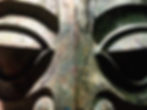Ancient Mystery
Sanxingdui
Sanxingdui, the name attributed to one of the most remarkable archaeological discoveries, proves that there is much to be learnt about the history of this planet.
Be the first to receive Subscribabout sales, events and exclusive offers.

This was an ancient civilization that is now lost in the records, and one that forced historians to rethink China's past. Perhaps China's ancient history was not entirely Han-centric, as many scholars believe.

In 1986, two consecutive pits were discovered in Guanghan, a once unknown village 30 km from Chengdu. What they found in these pits, including dozens of intricate bronze masks, Jade weapons, giant bronze trees, and a gold staff, brought worldwide fame to this town. Heralded as one of the greatest archaeological discoveries of our time, this site is also know as the "ninth wonder of the world."

We now know these enigmatic objects belong to the Shu Culture originating 4,800 years ago, a completely forgotten people until only the late 20th century. Even more, the artistic style and technological advancements of this ancient people are unique to their time, completely distinct from the Chinese culture. Upon viewing some of the artifacts with my own eyes, I can assert this is quite unlike anything we've seen in terms of ancient cultures. The style and structure evokes ancient Egyptian or Babylonian more than anything else, but if someone proposes alien origins, even that may not be too far fetched.
This is truly one of the wonders of the ancient world.

The artifacts are wonderfully displayed in the Sanxingdui Museum, perfectly accenting their mysterious origins. From the dimly-lit halls and corridors where lights only shine on the ancient objects, to the subtle but mysterious music, I can't help but to place myself in the middle of this mystery.

The most striking artifacts were the bronze masks, each unique and each mysterious. The abstract artistic designs seem out of place for such antiquity, with their distinct contours and memorable facial features. Speaking of the faces, archaeologists are still struggling to figure them out as they are definitely not Chinese nor anything else we know of. The designs of the birds, trees, and other animals are equally striking, inspiring the inner artist in me. Not much is known of the ancient Shu people, but they do express vivid imagination through their grand artwork

What happened to the Shu Culture? As pressing as this question may it, it stills eludes even the most researched archaeologists. The masks, in particular, exudes mystery, and to this day the meaning of these objects remain a mystery.
If you were to ask me, I would say the style evokes the artistic creations of the Pacific Northwest inhabitants of Alaska and Siberia. Perhaps after being wiped out of the land in Central Sichuan, they could have journey northward, inspiring the artistic minds of the people who later came to be known as the Inuits. The way I look at it, it's as good as anyone's guess.


